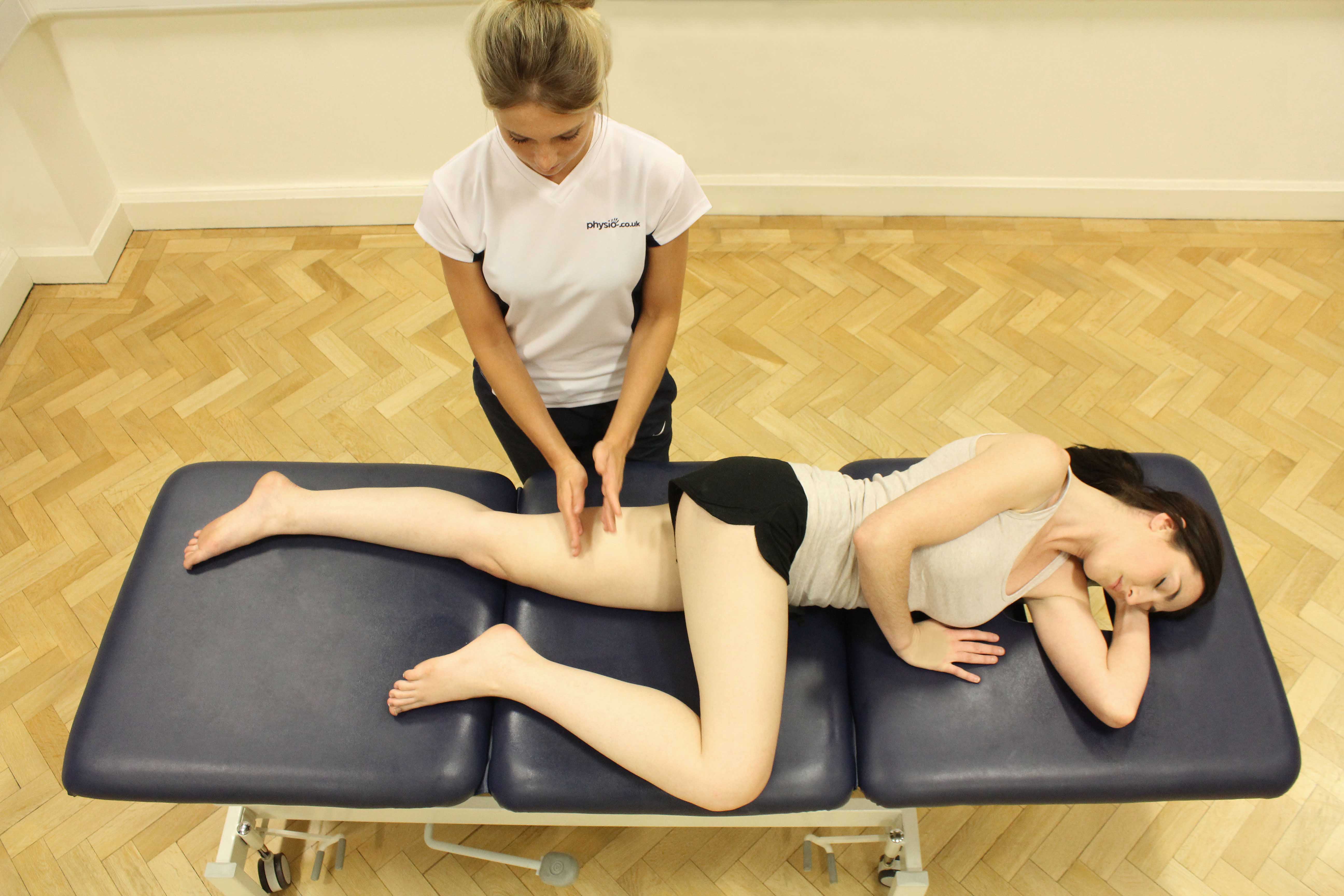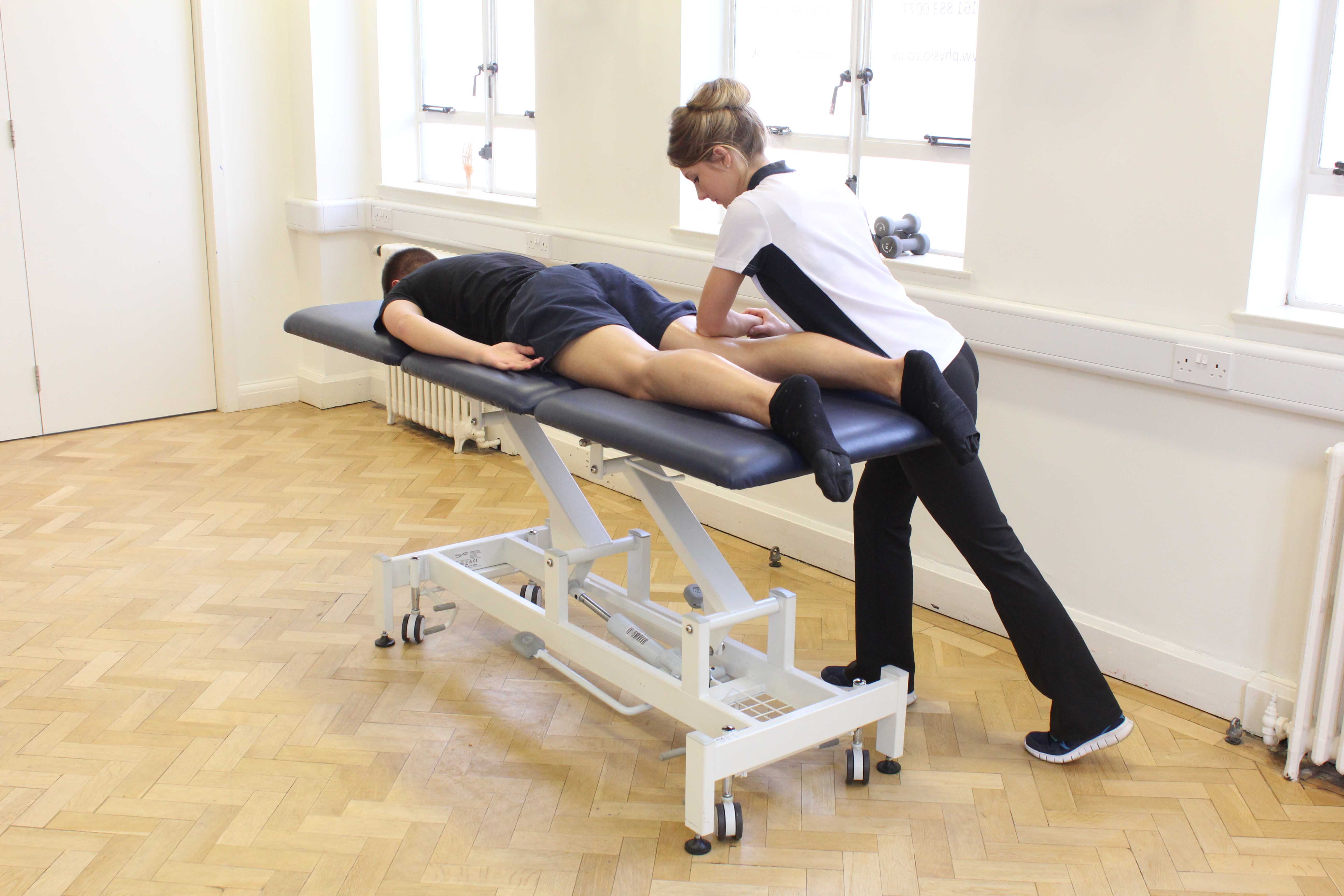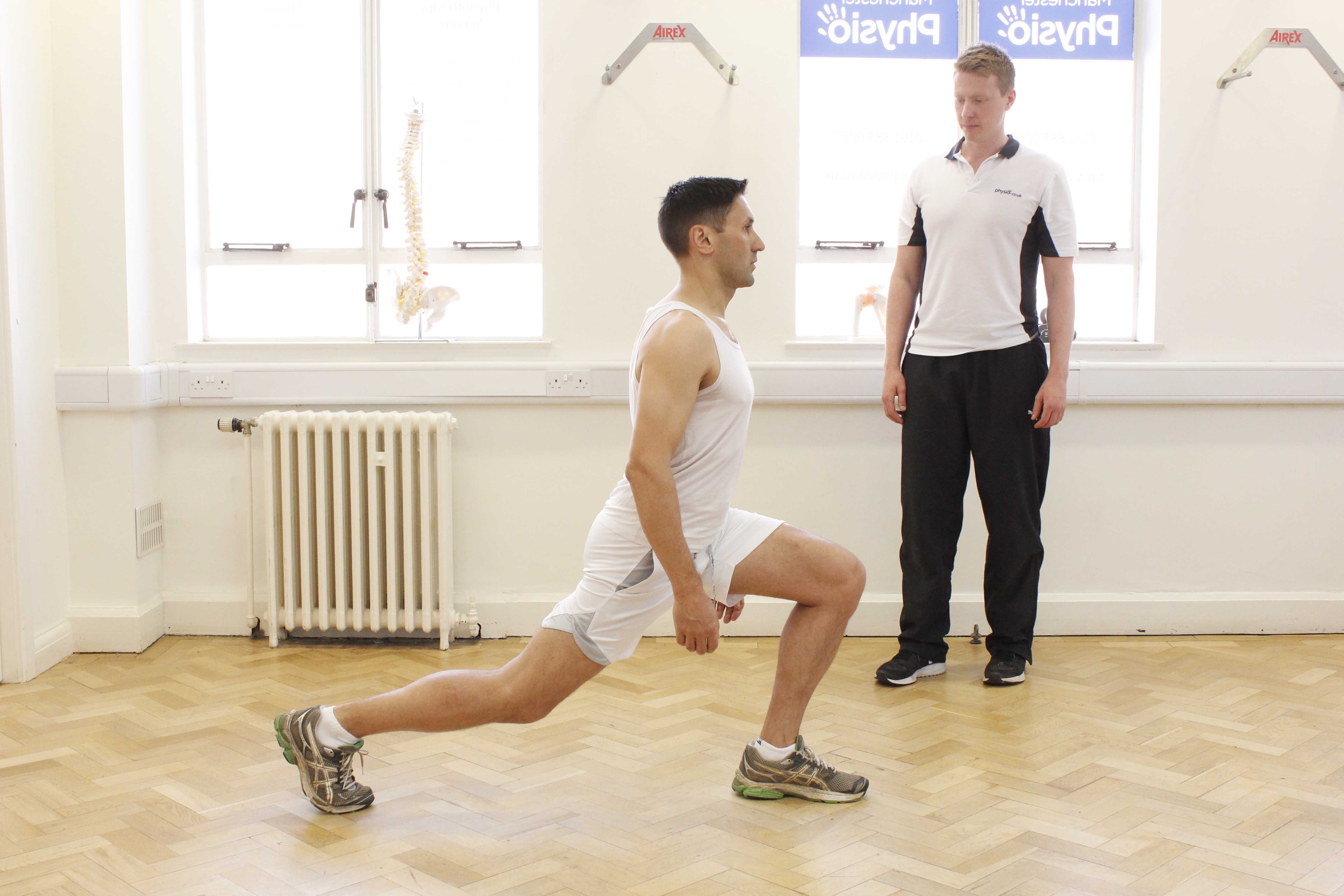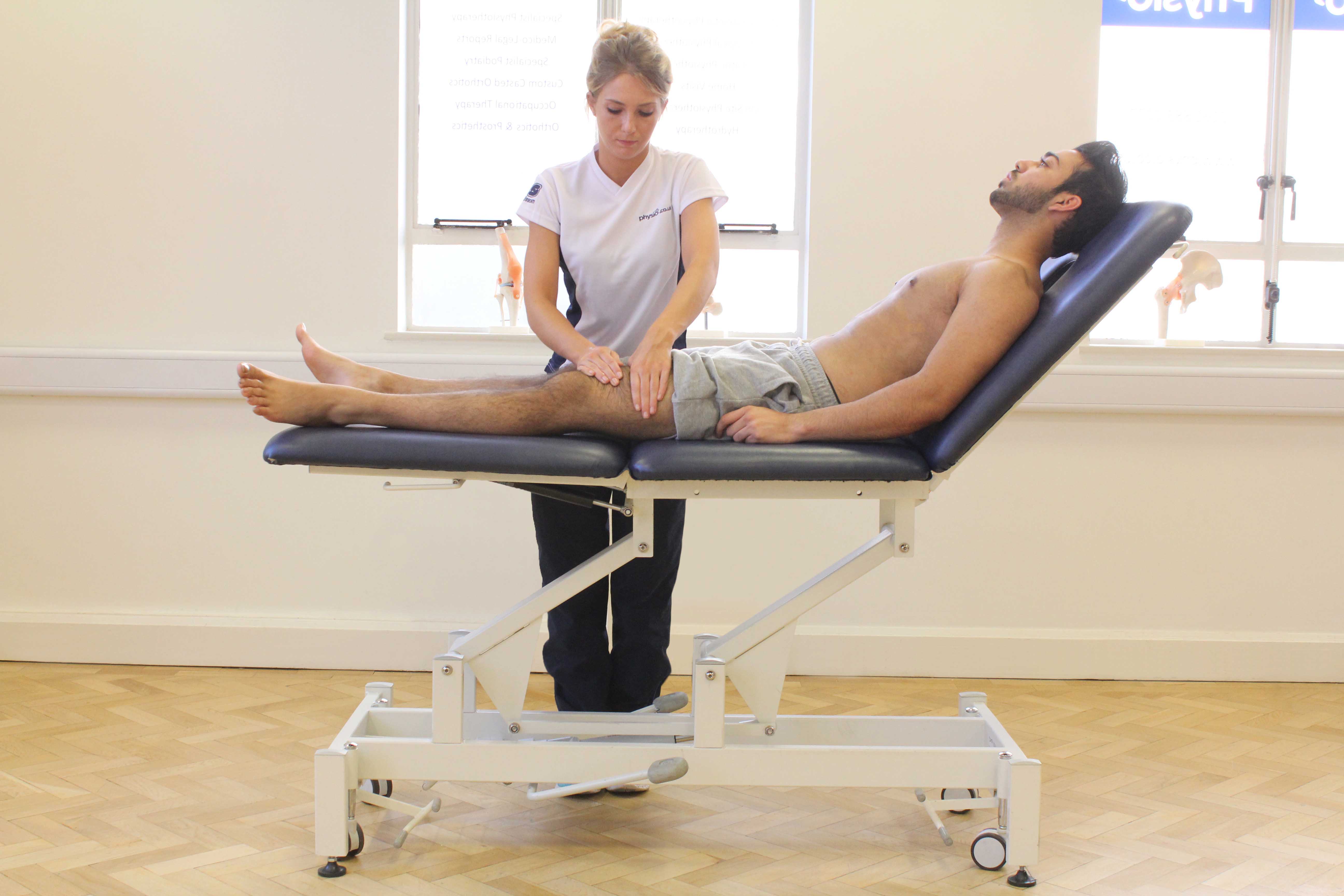What is upper leg compartment syndrome?
Muscles in the upper leg are separated into different compartments by strong fascia (a type of connective tissue). If the pressure builds up in these compartments, this is known as compartment syndrome which can occur in the lower legs. Physiotherapy is an effective treatment for upper leg compartment syndrome.
 Above: Hacking percussion soft tissue massage of the hamstring muscles by specialist MSK therapist
Above: Hacking percussion soft tissue massage of the hamstring muscles by specialist MSK therapistHow does upper leg compartment syndrome happen?
Any serious trauma to the upper leg can cause compartment syndrome. This may cause inflammation (swelling) and increase the pressure within the compartments. If this continues, the blood flow to the area could reduce and cause areas of the tissue to die.
What are the symptoms of upper leg compartment syndrome?
There are a number of symptoms associated with upper leg compartment syndrome. The most common complaint is pain in upper leg area. Other symptoms include:
- reduced range of movement
- swelling/inflamation
- stiffness
- weakness
- numbness
- spasm
- tingling / pins and needles
 Above: Deep tissue massage of the hamstring muscles by specialist MSK therapist
Above: Deep tissue massage of the hamstring muscles by specialist MSK therapistWhat should I do if I have upper leg compartment syndrome?
If you notice any symptoms of upper leg compartment syndrome, you must seek professional advice immediately. You may need to have various tests including a physical examination, X-rays or MRI scans. If your condition is severe, it may require surgery to reduce the pressure within the muscle compartments. This is known as a fasciotomy and will also remove any dead tissue. As soon as you have had your operation, it is important to begin a physiotherapy programme as soon as possible.
Physiotherapy treatment for upper leg compartment syndrome.
There are various physiotherapy treatment options for upper leg compartment syndrome. Following your operation, it is important to begin physiotherapy as soon as possible to begin your rehabilitation. Possible physiotherapy treatments include a strengthening and stretching exercise programme. Other treatments may include:
 Above: Progressive quadricep strengthening exercises supervised by specialist MSK therapist
Above: Progressive quadricep strengthening exercises supervised by specialist MSK therapistWhat shouldn’t I do if I have upper leg compartment syndrome?
Do not ignore any symptoms of upper leg compartment syndrome as this could lead to serious complications and permanent damage.
Could there be any long-term effects?
If upper leg compartment syndrome is treated immediately, symptoms should be reduced with surgical intervention and a tailored physiotherapy programme.
 Above: Rolling soft tissue massage of the quadricep muscles by experienced therapist
Above: Rolling soft tissue massage of the quadricep muscles by experienced therapistTo arrange a physiotherapy appointment call Physio.co.uk on 0330 088 7800 or book online.

 0330 088 7800
0330 088 7800


































